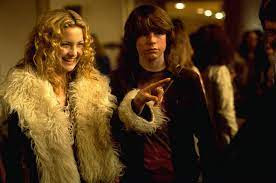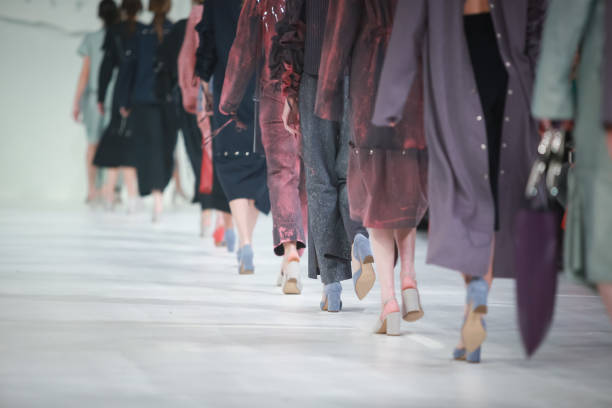Best Fashion Moments in Film History
When fashion and film collide, magic happens. Memorable moments that leave us thinking of them for years to come. The backbone of character development, and the pillars of both inspiration and nostalgia, sometimes the fashion moments in the films hold up longer than the films themselves. Whether you're a green dress in Atonement, kind of person, or an Annie Hall devotee, we've all been swayed to seek out a bias cut silk dress at the credit of these scenes, so below, is a roundup of the 5 best movie fashion moments, according to the RUSSH editors.
Annie Hall (1977)
In the realm
of cinematic gems, 'Annie Hall' (1977) shines as a brilliant star that still
dazzles with its wit, charm, and profound exploration of human relationships.
Directed by Woody Allen, this iconic film weaves a tale that transcends time,
offering a glimpse into the complexities of love and the peculiarities of life.
.jpg)
At the heart
of this narrative stands the enigmatic Annie Hall, portrayed by the
incomparable Diane Keaton. Annie is more than just a character; she's an
embodiment of quirkiness and vulnerability, a personality that resonates with
anyone who has felt the tugs and twists of romance. Through Keaton's
performance, Annie becomes more than a love interest; she becomes a mirror
reflecting the intricacies of our own hearts.
The film's
fashion choices, particularly Annie's wardrobe, have also left an indelible
mark. Her unconventional style—featuring oversized men's blouses, slouchy
trousers, and an iconic necktie—captured a certain androgynous chic that defied
norms and set trends. Diane Keaton's unique fashion sense within the film not
only shaped Annie's character but also found its way into popular culture,
leaving a lasting influence on women's fashion.
The
on-screen chemistry between Woody Allen's neurotic comedian Alvy Singer and
Diane Keaton's endearingly quirky Annie Hall is the cornerstone of the film's
magic. Their witty banter, poignant conversations, and heartfelt moments create
a canvas that portrays the highs and lows of a relationship with an authentic
brush. 'Annie Hall' isn't just a love story; it's a human story—one that
navigates the spectrum of emotions that love brings forth.
The film's
narrative structure, with its nonlinear storytelling and fourth-wall-breaking
moments, reflects the complexity and unpredictability of life itself. As Alvy
reminisces about his relationship with Annie, the audience is taken on a
journey that isn't just about a romance that was, but also about the musings
and self-discoveries that emerge from it.
'Annie Hall'
earned its place in cinematic history by winning four Academy Awards, including
Best Picture. Beyond the accolades, it remains a piece of art that resonates
across generations. Its witty dialogue, unique characters, and exploration of
the human psyche continue to inspire filmmakers and audiences alike.
As we
revisit 'Annie
Hall,' we're reminded that love is a tapestry woven with both laughter and
tears, and that human connections are often as messy as they are beautiful. The
film's enduring legacy is a testament to the power of storytelling, the depth
of emotions, and the timelessness of embracing our quirks and
vulnerabilities—just as Annie Hall herself so effortlessly did."
Almost
Famous (2000)
Transporting
us back to the freewheeling spirit of the 1970s, 'Almost Famous' (2000) remains
a timeless ode to the world of rock 'n' roll and self-discovery. At the heart
of the film's magnetic allure is Kate Hudson's portrayal of a girl on the
road—an embodiment of wanderlust and untamed dreams.
.jpg)
In the midst
of the film's electric atmosphere, Hudson's character dons a shearling collared
coat that does more than just shield against the cold. It becomes a statement,
a visual cue to her unapologetic individuality, and a piece of cinematic
fashion that etches itself into memory.
The coat
itself is more than a mere accessory; it's a symbol of rebellion and
authenticity. As the character navigates the whirlwind journey of the rock
music scene, the coat becomes a steadfast companion, draped around her with an
air of effortless coolness. It's a reminder that clothing can be more than
fabric—it's an extension of one's identity, a reflection of their aspirations
and desires.
Hudson's
portrayal in this role is a masterclass in bringing a character to life.
Through her, we experience the heady highs and soul-searching lows of life on
the road, all while the shearling collared coat remains a constant, a
touchstone to her character's essence.
Cinema has a
unique way of intertwining fashion with narrative, and this coat is no
exception. It's a sartorial choice that adds depth to the character, a layer of
visual storytelling that goes beyond words. Every furrow of the collar and
every fold of the fabric speaks to the character's journey, making the coat a
silent narrator of her evolution.
In 'Almost
Famous,' Kate Hudson's character becomes a source of inspiration, embodying the
spirit of adventure and unapologetic self-expression. The shearling collared
coat becomes a cherished artifact of her on-screen persona, a reminder of the
power that fashion wields in shaping our perception of characters and their
worlds.
As we
revisit 'Almost Famous,' we're not just revisiting a film; we're revisiting an
era, a sensation, and a piece of cinematic history. And in the midst of it all,
the shearling collared coat stands as a testament to the enduring connection
between fashion and film—a connection that continues to captivate and
inspire."
How To Lose
a Guy in 10 Days (2003)
In the realm
of cinematic fashion moments, there's a certain allure that transcends time.
Just as Keira Knightley's unforgettable green Atonement dress etched itself
into our collective memory, another scene comes to mind—one that embodies a
different kind of enchantment, courtesy of the ever-charming Kate Hudson.
In this
particular cinematic juncture, Hudson donned a silk gown that was destined to
become iconic in its own right. The scene in question remains etched in the
hearts of viewers, as we all succumbed to the undeniable allure of her
presence.
.jpg)
There's a
certain magic to the way a well-chosen wardrobe can transform a moment into an
everlasting memory. Just as Knightley's Atonement dress was more than mere
fabric, this silk gown seemed to possess a similar transformative quality. It
was as though the threads of the gown were woven with a touch of timelessness,
leaving an indelible mark on the tapestry of film history.
Kate
Hudson's portrayal in this scene was nothing short of captivating. The gown
draped around her with an elegance that mirrored her own, and the synergy
between actor and attire was palpable. As viewers, we couldn't help but be
drawn into this enchanting dance, where the dress became more than an outfit—it
was a character in its own right, a co-star in the unfolding drama.
Moments like
these remind us of the profound impact that cinema can have on our emotions and
perceptions. Just as words can weave stories, fabrics can tell tales of their
own, evoking emotions that linger long after the credits roll. It's a testament
to the power of visual storytelling, where an iconic dress can become a symbol
of an entire scene, a vessel for emotions, and a portal into a realm of
imagination.
So, in the
grand tapestry of film history, let's not forget the silk gown that was almost
as iconic as the Atonement dress. Kate Hudson's moment in this ensemble reminds
us that while actors breathe life into characters, the costumes they wear
breathe life into moments, creating an everlasting connection between the
screen and the heart.
A Bigger
Splash (2015)
.jpg)
Considering
Dior and Raf Simons both worked on Tilda Swinton's wardrobe
for A Bigger Splash, not taking note of her oversized button down
shirt dresses, clean, tailored lines, and impeccably elegant swimwear would
render this round up incomplete.
Poetic Justice (1993)
.jpg)
The
reference point for perfect 90s style, and a clip that always launches us back
to when cat’s cradle was cool. The styling in all of Poetic Justice was
superior, but these are the looks we remember best.



nice work
ReplyDelete